Dream (2011)
A man named Juan, whose desire to eat a whole chicken all to himself grows until it becomes greater than his loyalty to his family. One day he finds himself with the chicken he dreams of, but is interrupted by three powerful strangers who one by one insist he share his prize.
Adapted from a Mexican folktale and punctuated with songs performed by two Mariachi -style musicians from a previous era, “Dream” draws on traditions related to Day of the Dead celebrations.
Poster Design by: Nell Saba
An adaptation of a Mexican folktale, told with two musicians manipulating a puppet world.
Dream was taken to many communities in the BC Interior, as well as to Victoria for Puente Theatre’s “Diversity and the Stage” symposium.
Written by: Cathy Stubington in conversation with Zompopo Flores.
Directed by: James Fagan Tait
Design: Cathy Stubington with Zompopo Flores.
Set elements b: Phillip Tidd
Set painting: Molly March.
Songs adapted from and infused with Central American folk styles.
Publicity and tour management: Jaci Metivier
First produced by Picardi Marionette Theatre and performed as part of Caravan Farm Theatre’s 1997 season.
Synopsis:
Juan dreams of eating a whole chicken, one day, all to himself, without having to share it with his children. It is an almost hopeless possibility, as he works all day at a coffee plantation, paying off his debts to his boss Don Basculo. One day the scoundrel Marcelo convinces him to squander his last peso at the lottery. Ashamed and contrite, he goes home to find that his wife Guadelupe is cooking a chicken that will go to Don Basculo in return for some money. It is Juan’s job to deliver it but instead, he takes the chicken to a quiet place to enjoy. Before he has a chance to bite into it, he is visited by God, the Devil, and Death, each of whom demands a share.
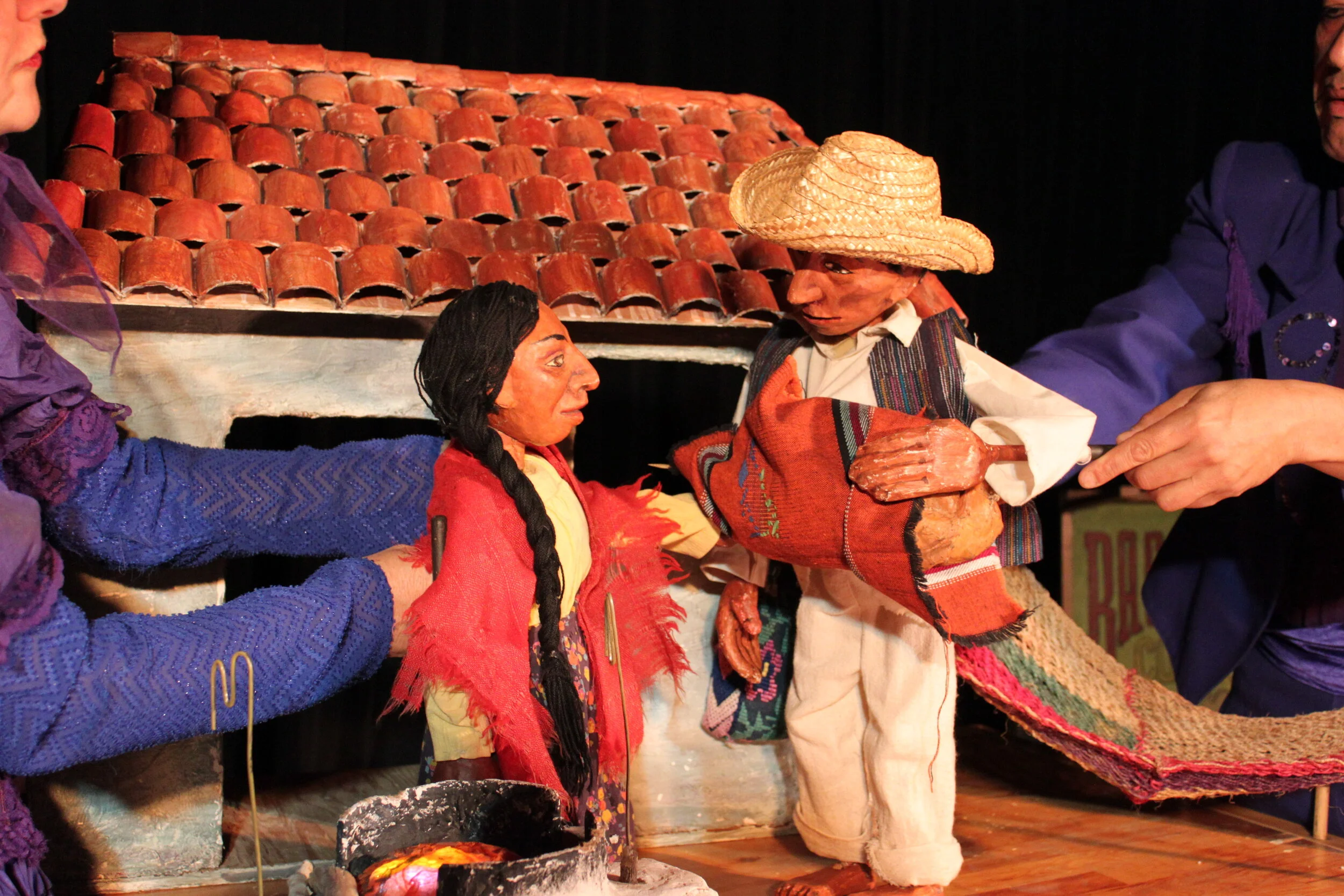
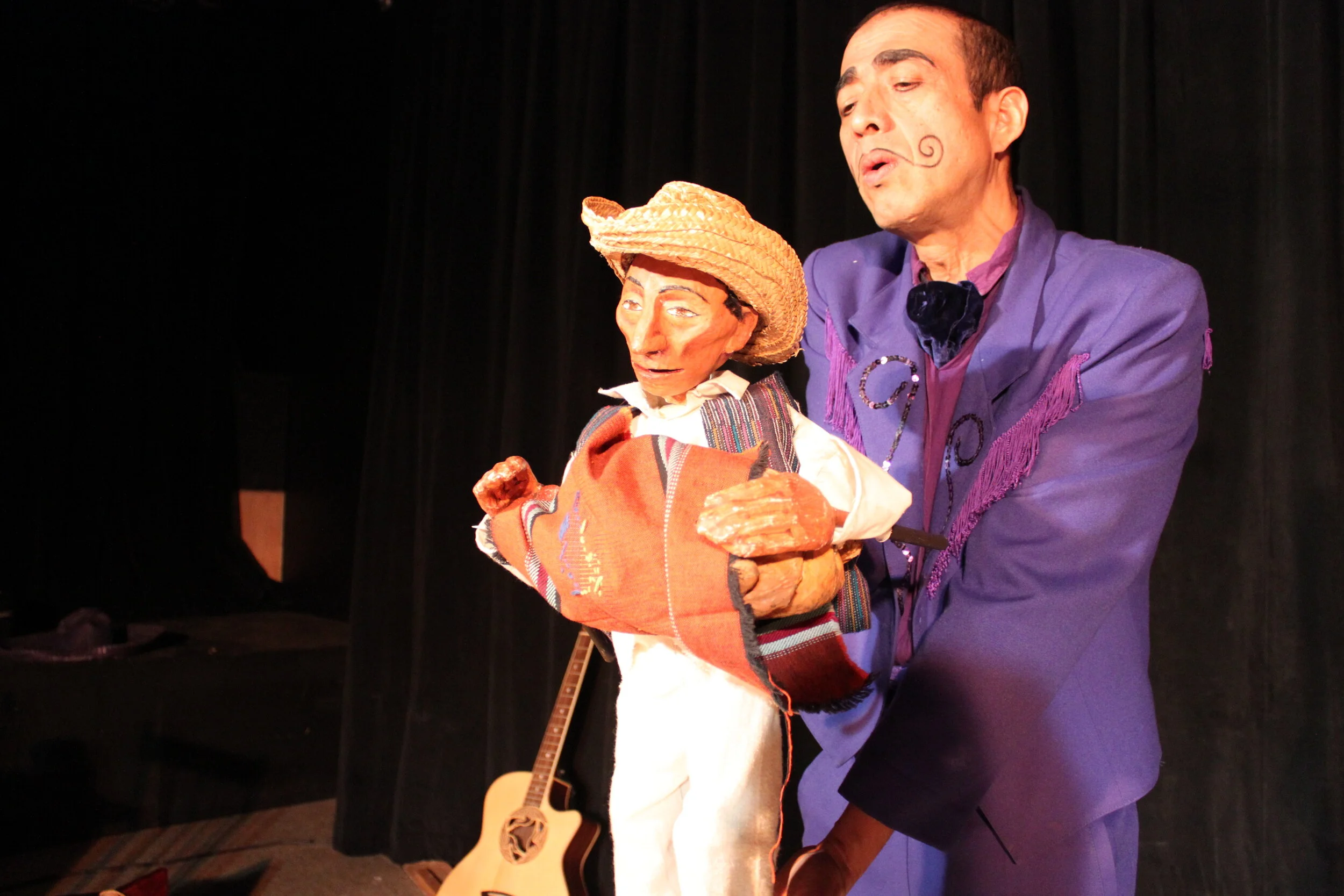
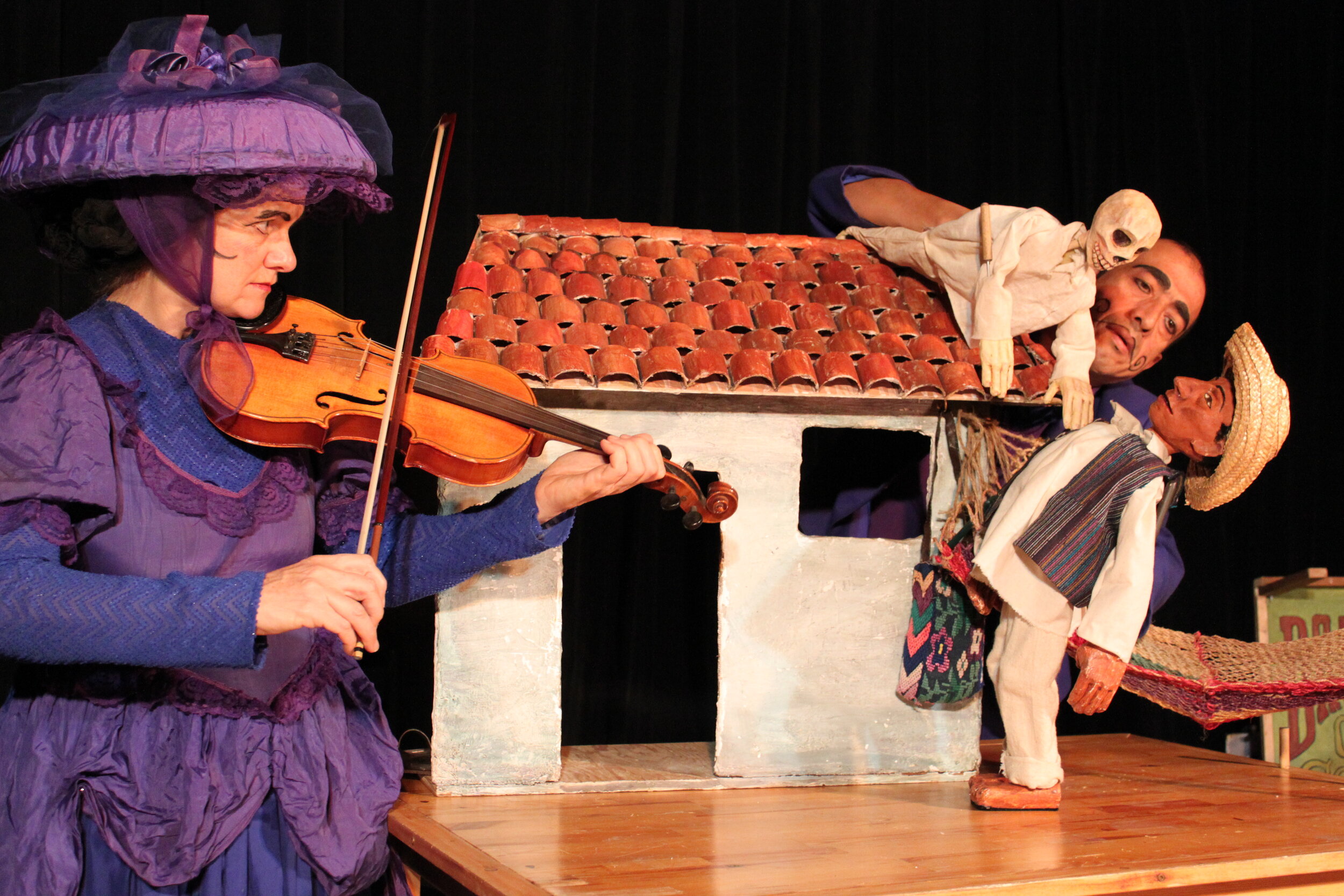


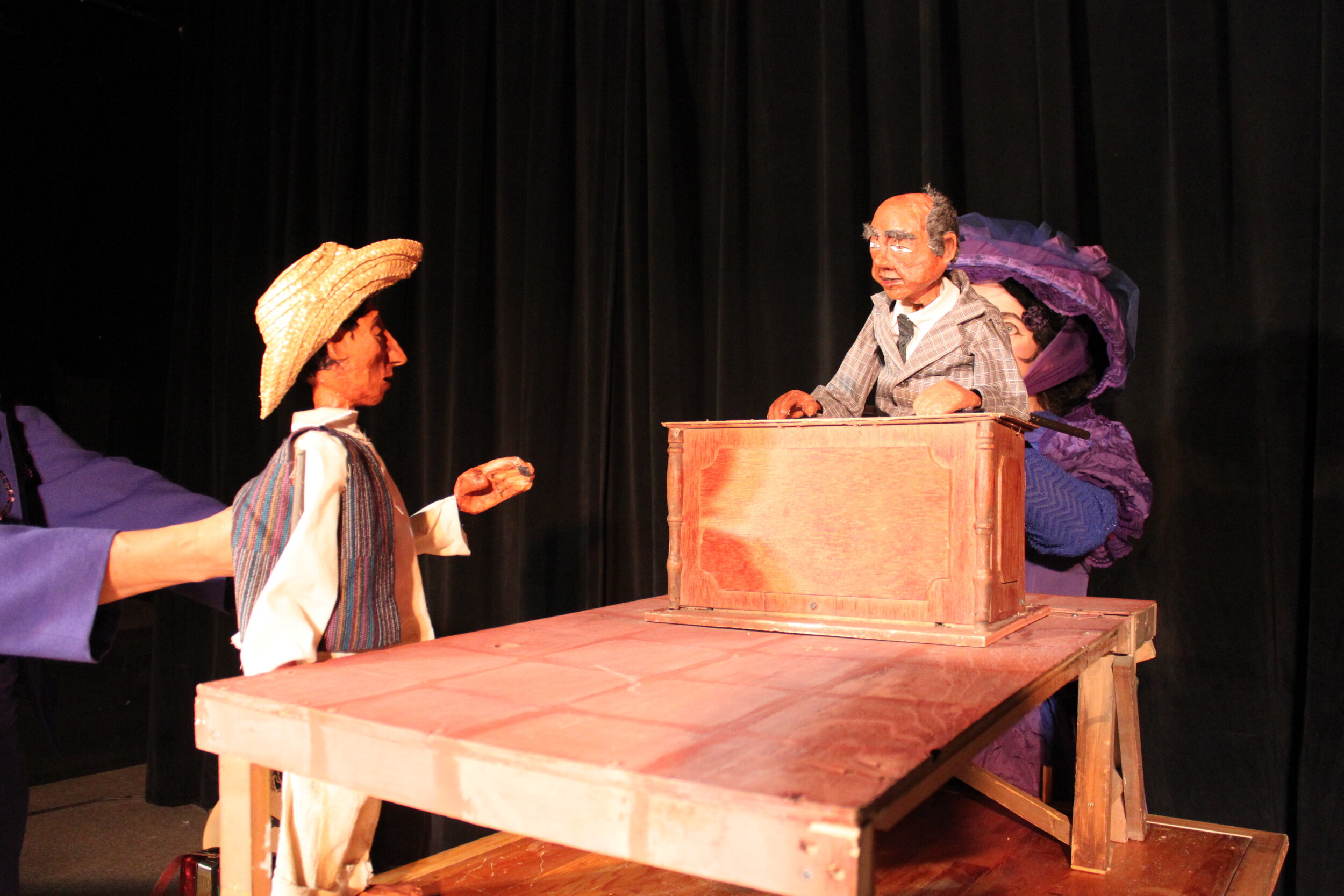


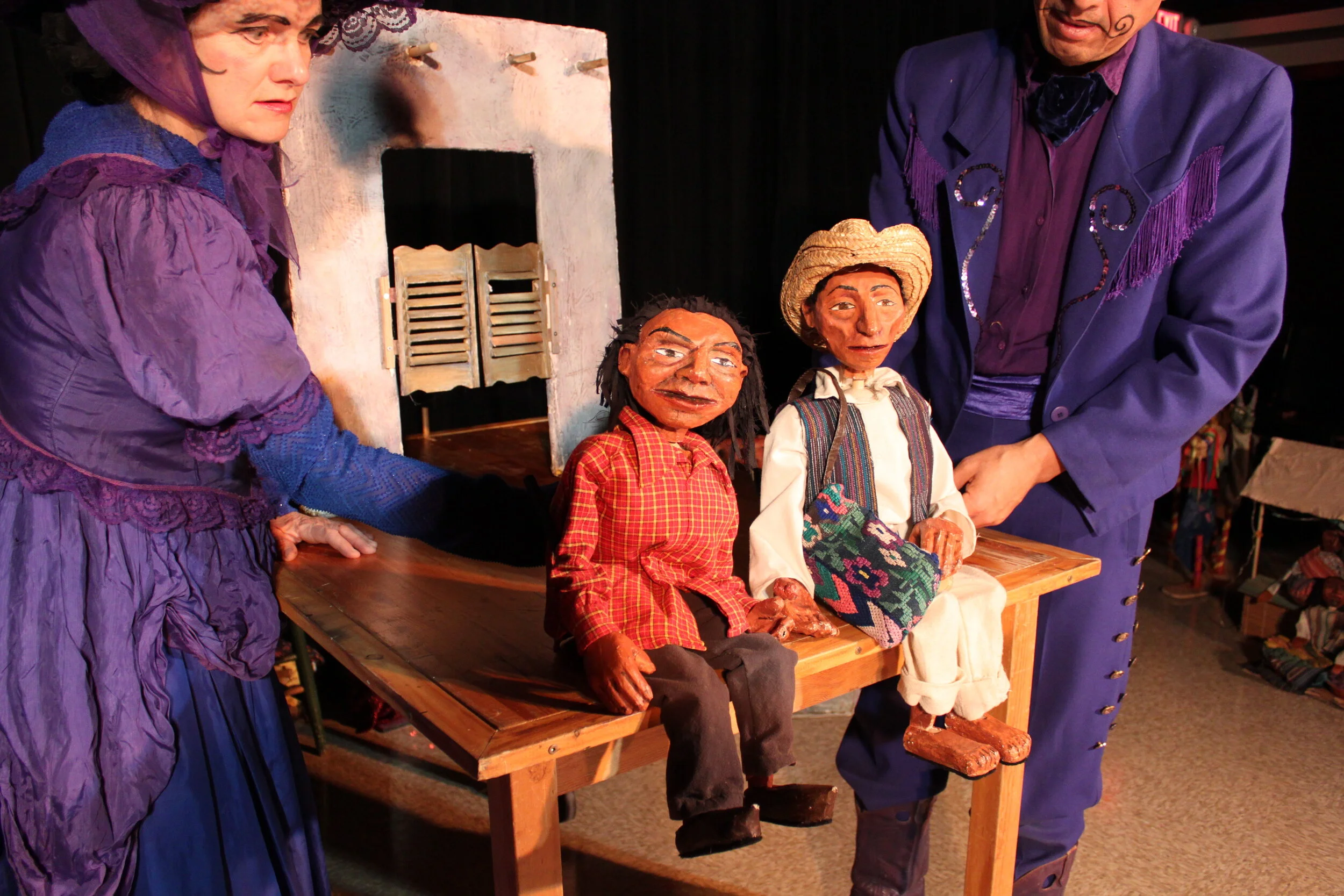
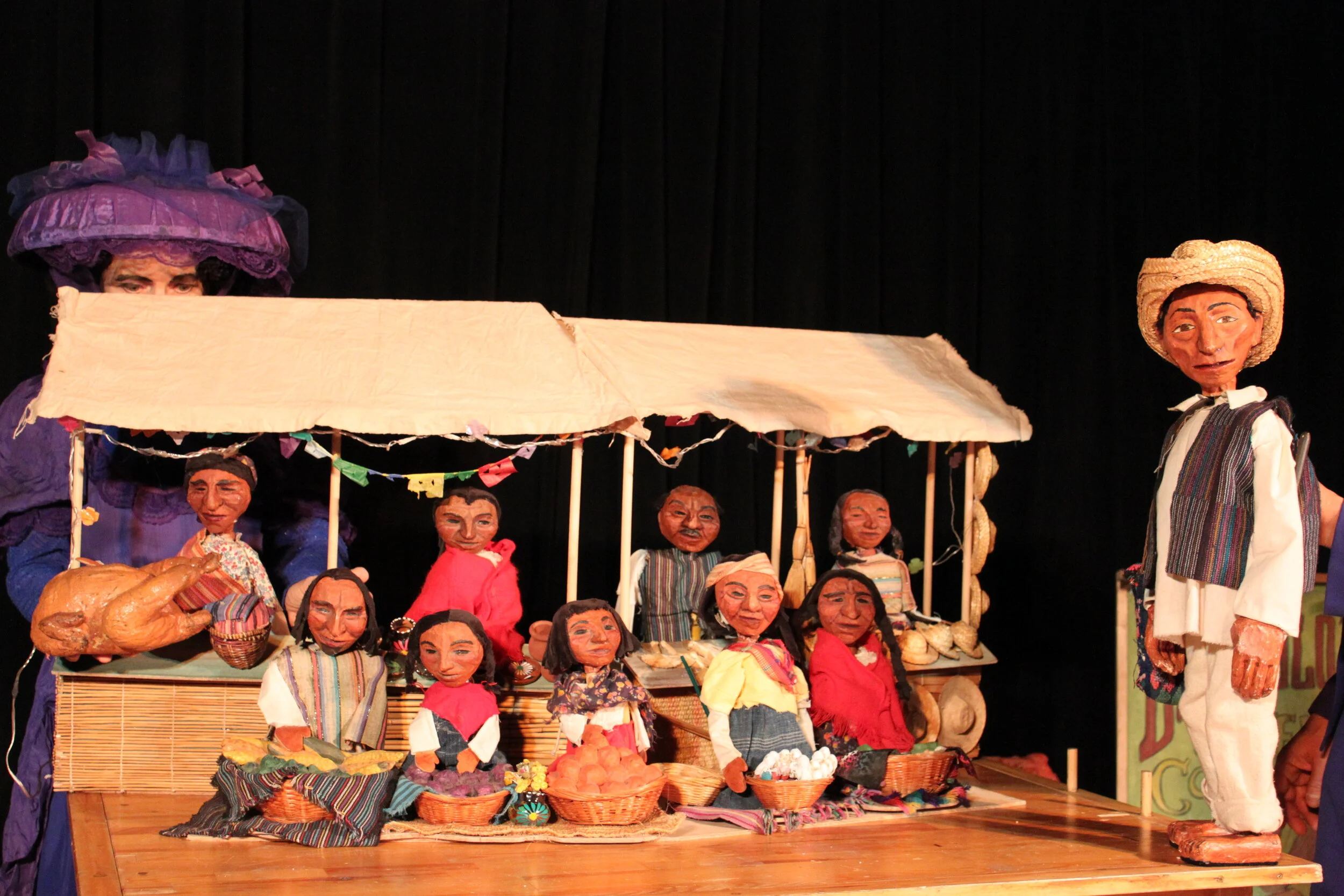
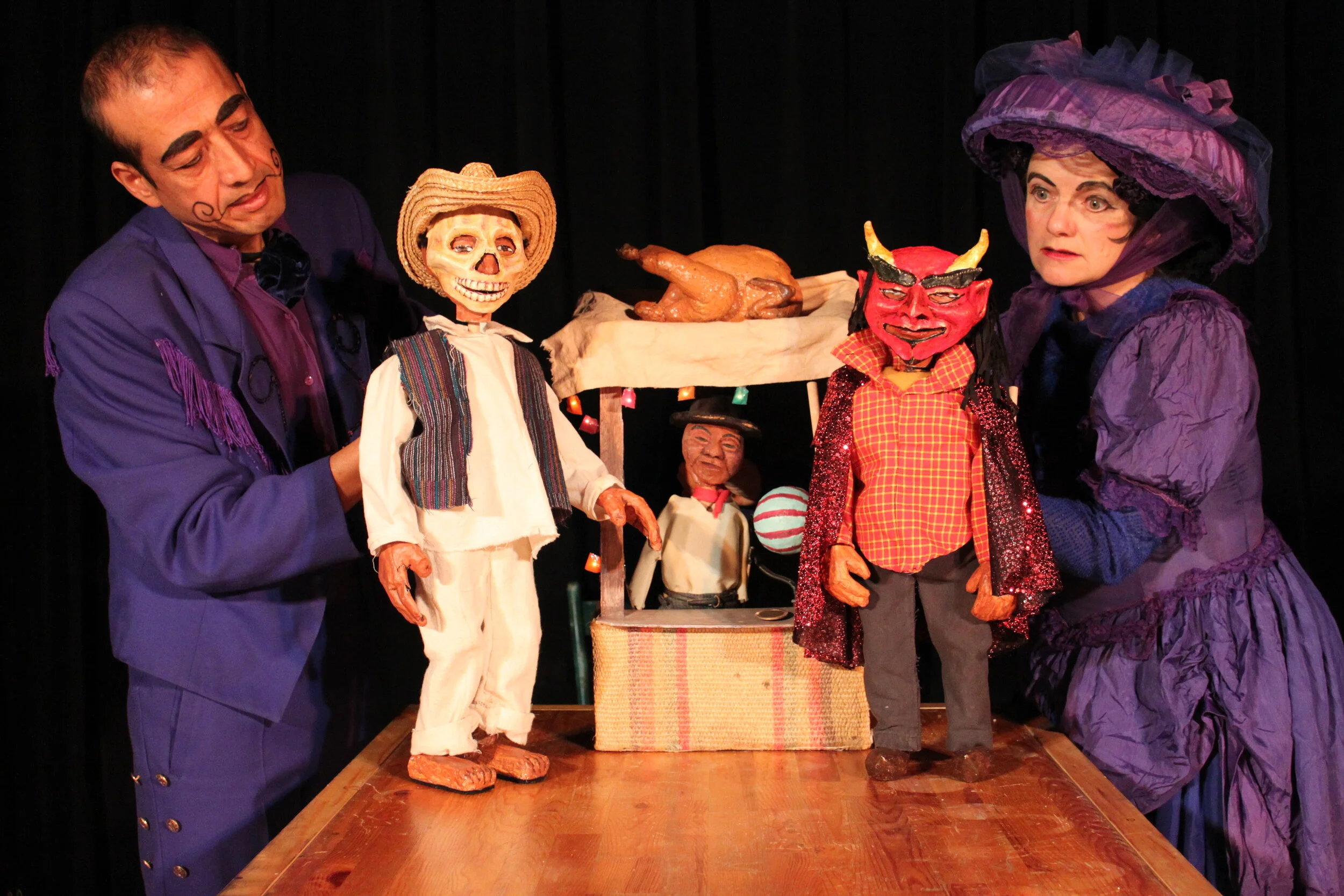

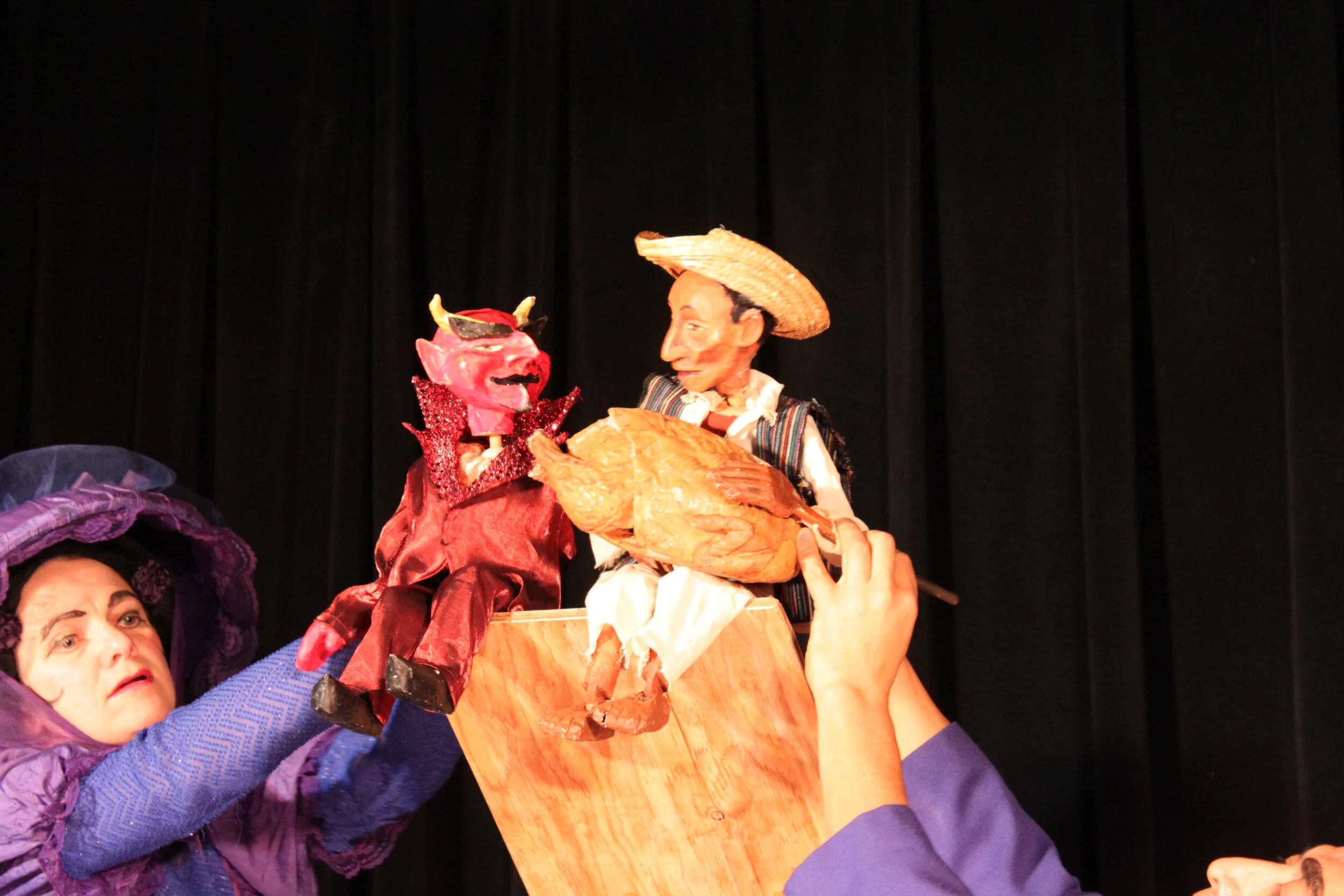
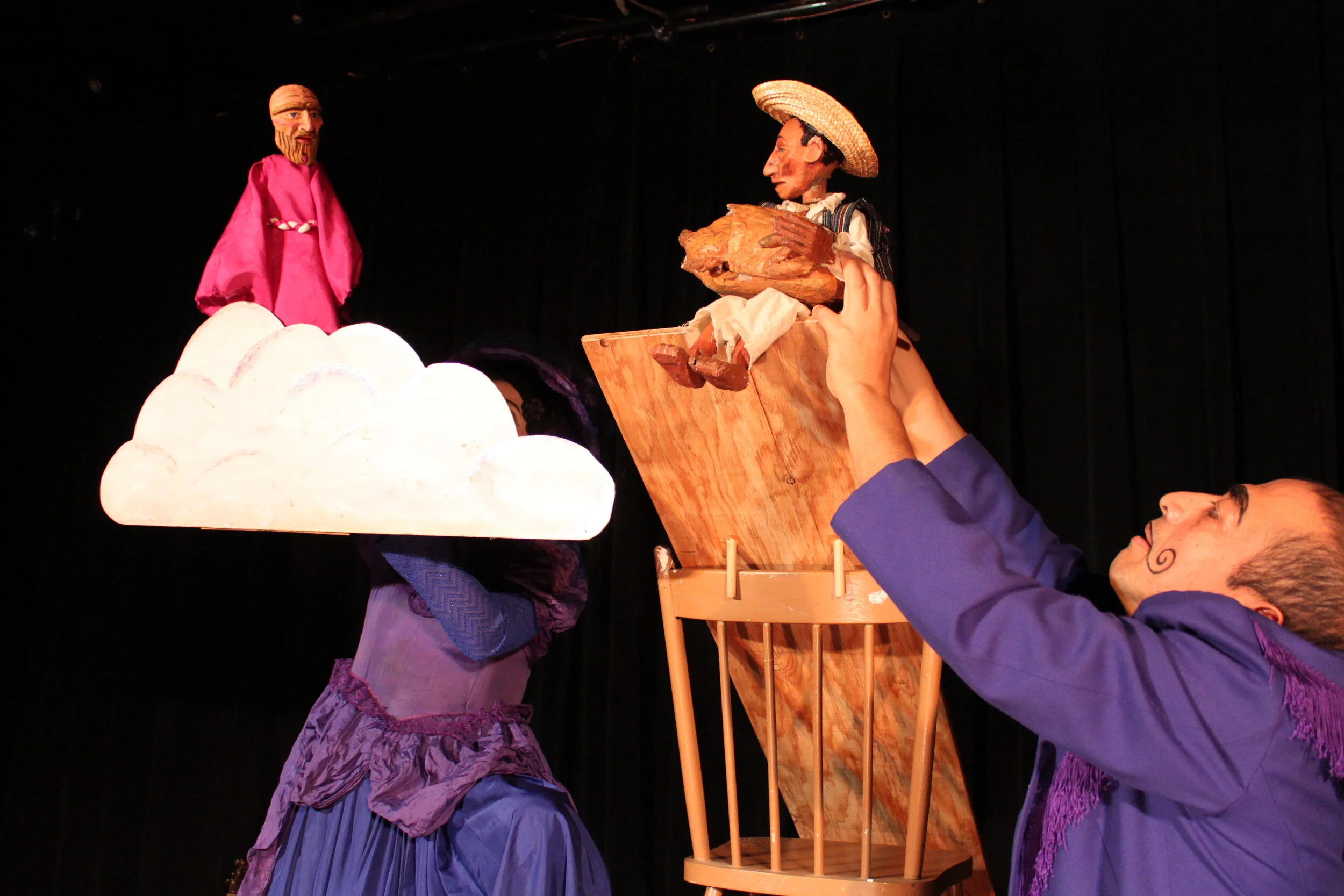

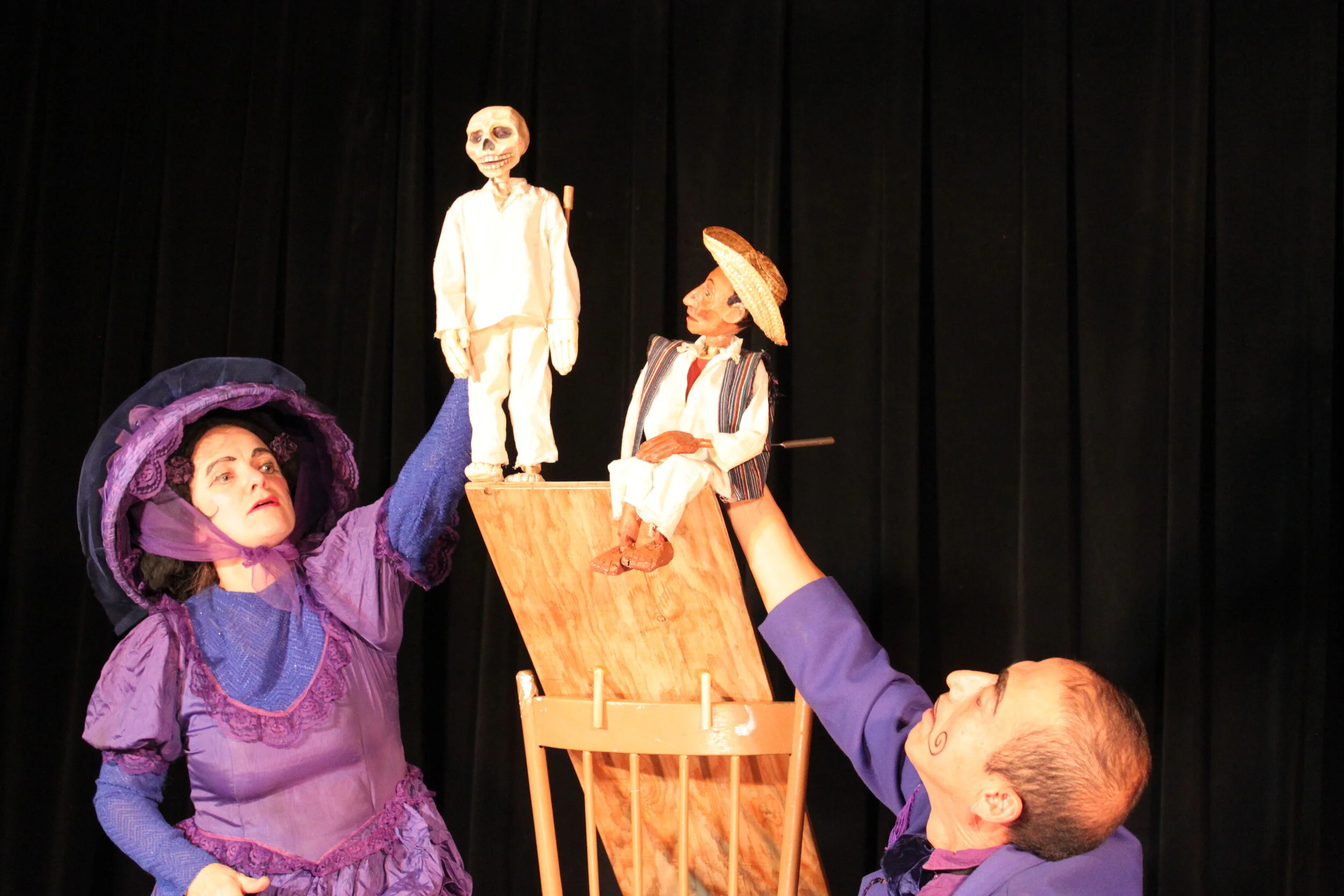
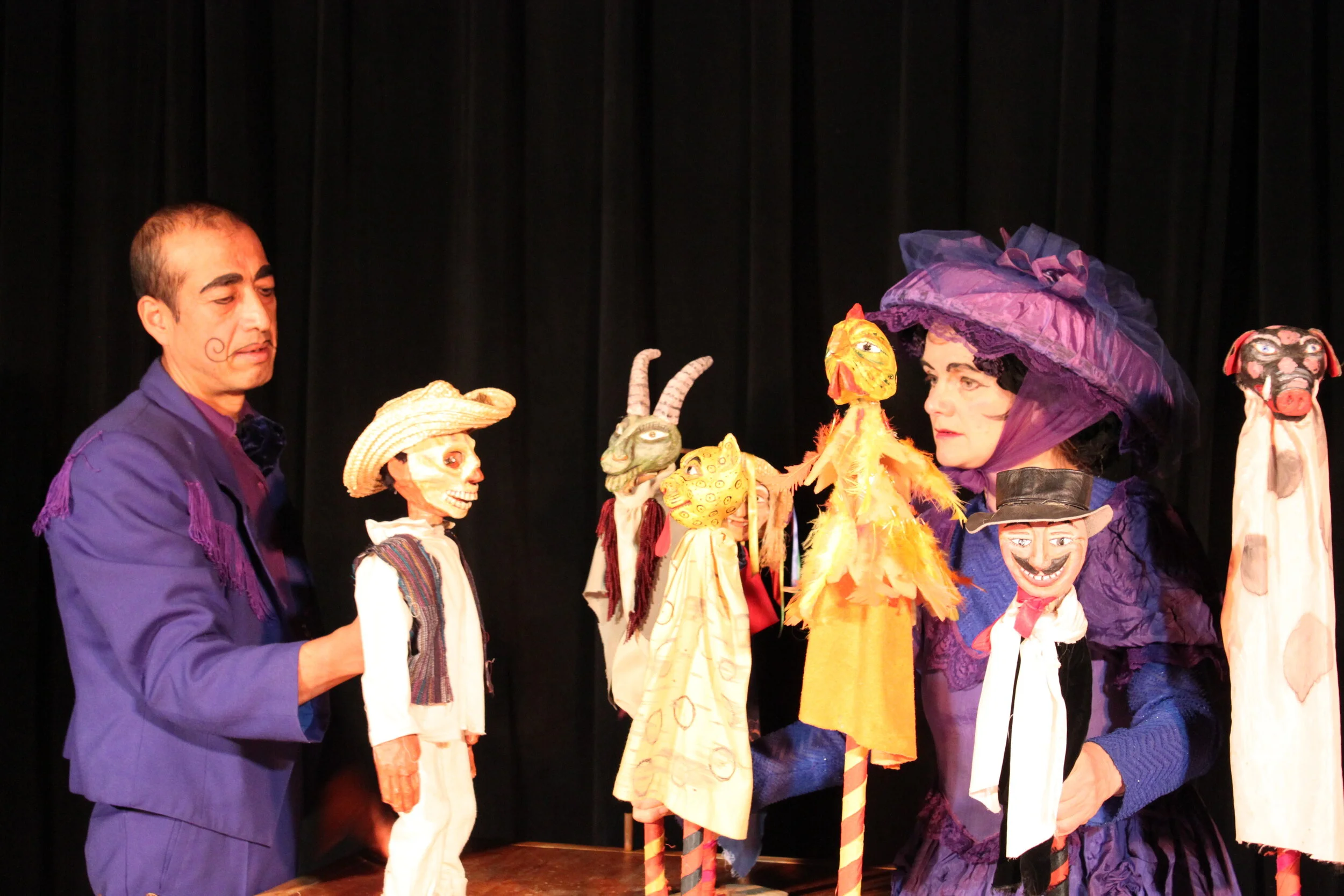
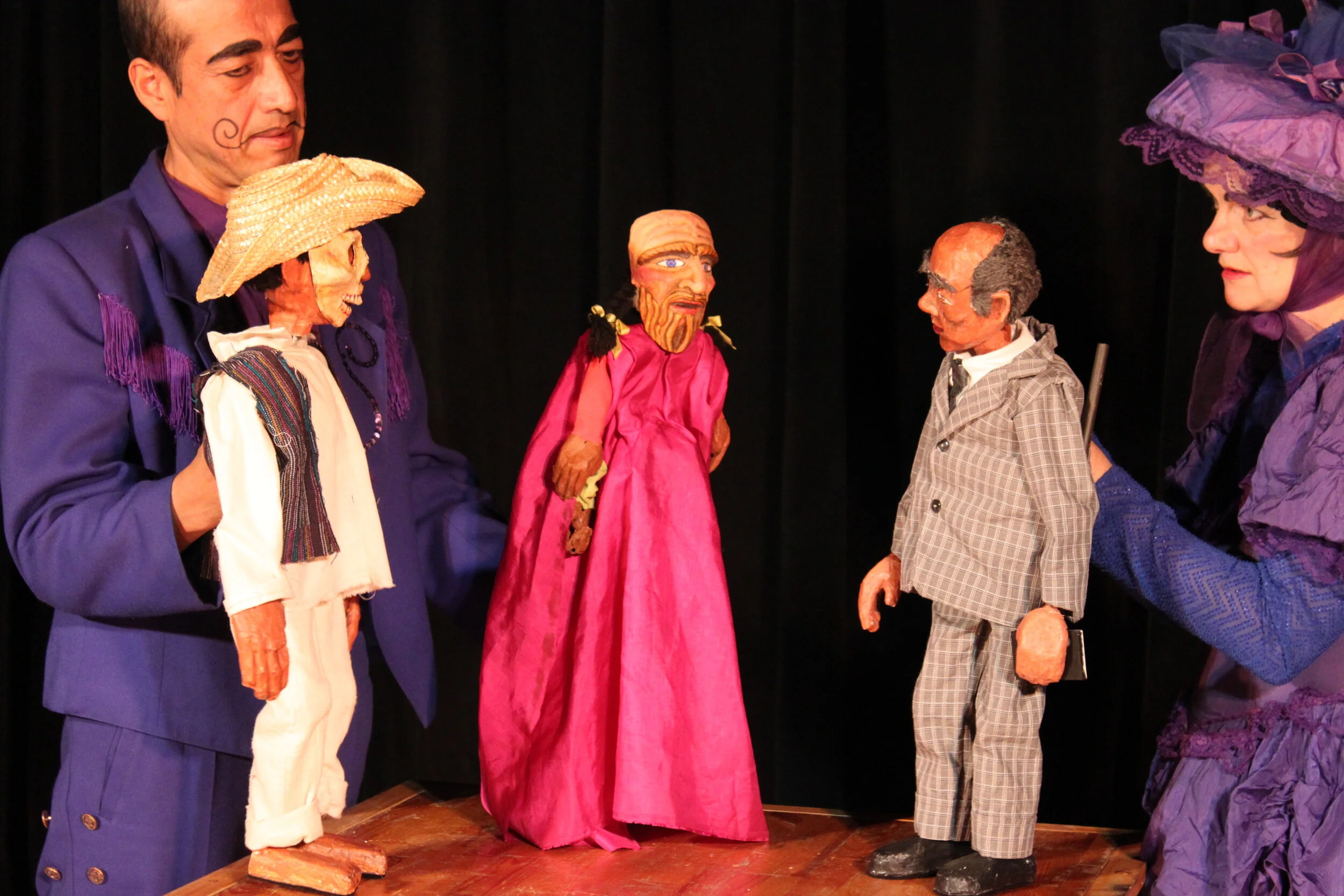
Concept and Style
Dream embodies both the puppet theatre style of Runaway Moon and the performance styles of Central American musicians; these complement each other, providing a “Brechtian” contrast. The performers, a “clown” Mariachi duo, interact with the audience, challenging their values while guiding the story. They all but disappear during the tabletop puppet scenes they manipulate.
Central to our theatre is an exploration of the relationship between the puppeteers and the stories that they tell. The storyteller’s narration can contradict, or expand on, what is seen concurrently in the puppet world.
In Dream, the storytellers are dead, and are telling a story more real than they are, as the puppets are alive within their own reality. The audience exists somewhere between the puppeteers who speak with them directly, and the puppets whose challenges and emotions are very human. As the puppet Juan meets his death face-to-face, so do the puppets watching him.
This shifting of realities, overlapping of worlds, ambivalence between what is real and what is not real, is equivalent to the “magic realism” common in Latin American literature. In this tradition magic is related with the world of the ancestors, the world we don’t see. Talking with spirits, or with the no-longer-living, is natural and continuous with reality.
The first production, at the Caravan Farm Theatre in 1997 (co-produced with Picardi Marionette Theatre), was set outdoors on the edge of a rocky outcrop. The puppeteers arrived as though from nowhere. The second production with Runaway Moon was made to tour to intimate venues where the musicians/ puppeteers appeared to be occupying the space.
It was exciting to have a chance to reconnect with this play and to transfer it from the terrain to tabletops that could visit a variety of locations on a serious tour. We found different values this time around and had lots of fun, and the audiences continued to be delighted, confounded and reborn. - James Fagan Tait, director
After the show people would stay around often for more than half an hour. The story of the puppets was discussed as though it had been a real-life situation, which amazed us as they were only puppets, not to mention just a play! People wanted to know what was to happen next to Juan’s wife Guadelupe. People wanted to know whether it was a dream or reality – and if it was a dream, whose dream? One man in Nelson wrote afterwards that “Dream” was the best thing he had ever seen and that it had changed his whole approach to life!




